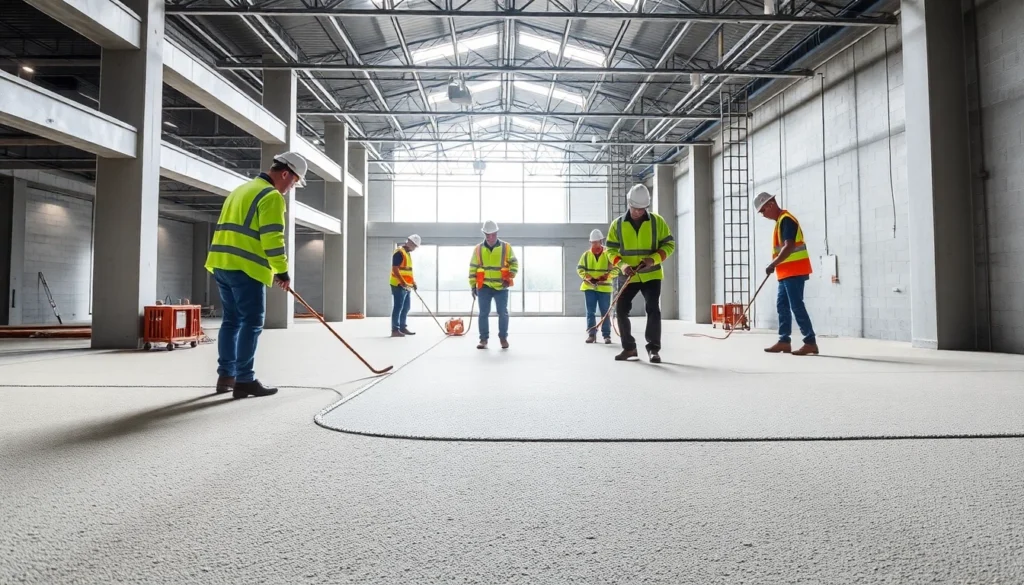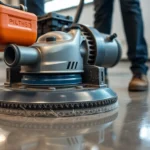Understanding Liquid Screeding and Its Benefits for Birmingham Projects
In the rapidly evolving landscape of construction and renovation in Birmingham, homeowners and builders are increasingly turning to innovative flooring solutions to enhance their spaces’ durability, efficiency, and aesthetic appeal. Among these solutions, liquid screeding has emerged as a preferred choice owing to its superior qualities over conventional methods. For those seeking high-quality floor preparation, Liquid screeding Birmingham offers a seamless and cost-effective way to achieve perfectly level floors, especially when paired with underfloor heating systems. This article delves into what liquid screeding is, its advantages, practical applications, and how to ensure successful implementation in Birmingham’s diverse construction projects.
What is liquid screeding and how does it differ from traditional methods?
Liquid screeding is a modern floor screeding technique involving the application of a free-flowing, pumpable mixture composed primarily of cement, sand, and water. Unlike traditional dry or semi-dry screeds, liquid screed is poured over a prepared subfloor, flowing into all nooks and crannies to create a smooth, level surface. This method significantly reduces manual labor and improves overall precision.
Traditional screeding methods typically involve mixing sand and cement manually or in batch, then allowing it to set over a period of days. These methods often require extensive manual finishing, which can lead to inconsistencies and prolong project timelines. Conversely, liquid screeding is pumped directly onto the floor, ensuring uniform thickness and excellent flow characteristics that result in a highly flat and smooth surface in less time.
Incorporating innovative additives, liquid screeds can also include properties like greater flowability, faster curing times, and enhanced bonding capabilities. Modern formulations are designed to be pumpable, minimizing waste and ensuring minimal disruption to the construction schedule.
Key advantages of choosing liquid screeding for Birmingham properties
- Speed and Efficiency: Liquid screeding allows for rapid installation, often completing a large area within a fraction of the time required by traditional methods. The pumpable nature eliminates the need for extensive manual labor, reducing labor costs and project duration.
- High Precision and Flatness: Its excellent flow properties enable installers to achieve floor levels with a high degree of accuracy, often meeting strict tolerances required for underfloor heating installations and high-end finishes.
- Enhanced Underfloor Heating Compatibility: Liquid screeds are often used as a base for underfloor heating due to their excellent thermal conductivity and ability to evenly distribute heat across a surface, ensuring energy efficiency.
- Reduced Waste and Fewer Defects: Thanks to its pumpability, liquid screeding minimizes waste and reduces the likelihood of common defects such as cracking or uneven settling that can occur with manual mixing or drying inconsistencies.
- Versatility and Compatibility: Suitable for various substrates including concrete, timber, or existing floor surfaces, liquid screed adapts to multiple building types—from residential homes and commercial complexes to industrial warehouses in Birmingham.
- Long-Term Durability: Properly applied liquid screed creates a strong, stable foundation resistant to future cracking or movement, ensuring longevity for your flooring system.
Common applications and suitable buildings in Birmingham
Liquid screeding is versatile and tailored to a broad range of building types across Birmingham. Some of its primary applications include:
- Residential Properties: Ideal for new-build homes, renovations, and extensions seeking smooth, level floors suitable for tiling, carpet, or laminate finishes.
- Commercial Spaces: Offices, retail outlets, and showrooms benefit from quick installation and high flatness, enabling fast turnaround and high-quality finishes.
- Industrial Warehouses: Heavy-duty facilities require durable, level surfaces capable of supporting machinery and storage systems, making liquid screed a practical choice.
- Public Buildings and Schools: Environments demanding quick construction and precise floor levels for safety and accessibility are well-served by liquid screeding solutions.
In Birmingham, with its diverse and busy construction landscape, liquid screeding is well-equipped to meet the demands of modern developments, especially where underfloor heating integration and rapid project completion are priorities.
Step-by-Step Guide to Installing Liquid Screed in Birmingham Homes and Businesses
Preparation and planning for a smooth installation process
Successful liquid screeding starts with meticulous planning. Initially, assess the substrate’s condition—ensure it is structurally sound and free of debris, oil, or loose materials. Moisture levels should be checked to prevent issues like poor adhesion or cracking. Communication with experienced contractors is essential to develop a project timeline that aligns with other build phases.
Additionally, consider environmental factors—temperature and humidity can influence curing times. In Birmingham’s climate, scheduling during moderate conditions enhances quality. Adequate curing space and protection from rapid drying or excessive moisture are vital for high-quality results.
Choosing the right liquid screed product for your project
Selecting appropriate liquid screed formulations depends on project requirements. For instance, if underfloor heating is involved, opt for a screed with high thermal conductivity and fast drying properties. Variations such as self-levelling or fibre-reinforced formulations may be recommended based on load requirements or surface finish expectations.
Consult with local specialists or suppliers who understand Birmingham’s construction standards to choose the most suitable product. Providers like liquidscreedfloors.uk or professional installers within the region can offer guidance on product selection and batch consistency.
Expert tips for ensuring quality and longevity of the floor
To maximize durability, ensure proper mixing ratios and pump settings are maintained during installation. Use professional equipment and experienced operators. During curing, maintain appropriate temperature and humidity levels; covering the surface with insulation sheets or curing blankets helps prevent rapid moisture loss.
Once cured, conduct regular inspections for signs of movement or cracking, and perform minor repairs promptly. Incorporate underfloor heating systems correctly—ensuring pipes or cables are embedded securely within the screed for optimal heat transfer and safety.
Best Practices for Working with Liquid Screeding Contractors in Birmingham
Selecting reputable and experienced installers
Choosing experienced, licensed contractors is crucial. Look for teams with proven track records in Birmingham, backed by positive client testimonials and portfolios. Verify their certifications and references to ensure compliance with local standards and Building Regulations.
Understanding project timelines and coordination
Clear communication about timelines, expectations, and responsibilities ensures a smooth workflow. Working with contractors familiar with Birmingham’s building environment minimizes delays caused by logistical challenges or permit issues. Establishing a collaborative schedule can streamline stages from substrate preparation to final curing.
Why local expertise enhances project outcomes in Birmingham
Local contractors understand Birmingham’s specific climate challenges, soil conditions, and building codes. They can advise on suitable screed formulations, moisture barriers, and insulation strategies. Their familiarity with regional suppliers and equipment availability often result in faster project completion and quality assurance.
Performance Metrics and Maintenance of Liquid Screed Floors
Monitoring curing time and floor stability
Proper curing is vital for achieving the desired floor strength and flatness. Typical curing times range from 7 to 28 days, depending on the product used and environmental conditions. During this period, monitor moisture levels, temperature, and any signs of cracking or uneven settling. Conducting surface tests ensures the screed has reached sufficient strength before installing finishes or underfloor heating systems.
Regular inspection and upkeep tips
After installation, periodically inspect for damage or signs of movement. Clean the surface to prevent accumulation of debris, which can cause surface imperfections. For floors with underfloor heating, ensure heating systems operate gradually during initial use, allowing the screed to adapt without stress.
Addressing common issues and repairs in liquid screed surfaces
Common problems include cracking, indentations, or surface laitance. Address minor cracks with suitable repair compounds promptly. Significant issues such as large cracks or unevenness may require professional rectification, like grinding or re-screeding. Preventive maintenance and early detection are key to prolonging the lifespan of your floor.
Future Trends in Liquid Screeding and Underfloor Heating in Birmingham
Innovations enhancing efficiency and sustainability
The industry is moving toward eco-friendly formulations incorporating recycled materials and lower-carbon index cements. Innovations like ultra-fast curing screeds and self-healing compounds are making installations even more sustainable and efficient, aligning with Birmingham’s push for green building practices.
Integration with smart home systems and energy savings
Liquid screed’s compatibility with underfloor heating allows seamless integration with smart thermostats and energy management systems. This synergy leads to optimized energy consumption, reducing operational costs and enhancing comfort for building occupants.
How Birmingham homeowners and builders can stay ahead
Staying informed about emerging technologies, attending local industry seminars, and partnering with innovation-driven contractors will empower Birmingham’s construction community to implement the latest in liquid screeding and underfloor heating solutions.


